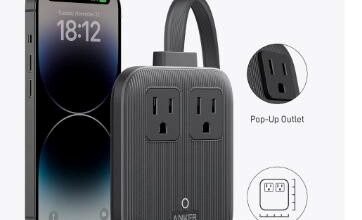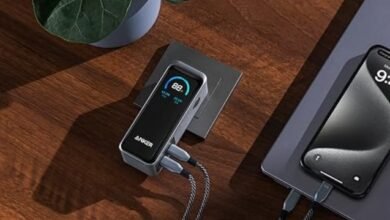
What Makes Qi Wireless Charging So Popular?
Wireless charging has become a staple in modern technology, offering convenience and efficiency. Its popularity is undeniable, driven by the seamless experience it provides for users. Qi wireless charging standardizes this feature, making it accessible across various devices and brands. This article delves into the factors contributing to the widespread adoption of the qi wireless charger, with an insightful look at the Anker MagGo Wireless Charging Station as a prime example.
The Rising Popularity of Qi Wireless Charging
Why Qi Wireless Charging is a Game Changer
Qi wireless charging eliminates the hassle of tangled cords and frequent plug-ins, redefining how we power our devices. Its universal compatibility sets it apart, enabling users to charge multiple gadgets with a single platform. The convenience extends beyond home use; it permeates automobiles, public spaces, and workplaces. As more manufacturers integrate Qi technology, compatibility issues diminish, enhancing consumer trust and satisfaction. The efficiency of wireless charging also speaks to its appeal. While wired options may boast higher speeds, the advancement in wireless charging technology now offers competitive rates. Qi-certified chargers provide reliable and consistent power transfer. This reduces fears of overcharging or incomplete charging cycles, which often plague traditional methods.
The Anker MagGo Wireless Charging Station
The Anker MagGo Wireless Charging Station exemplifies the pinnacle of what Qi wireless technology can achieve. Its standout feature is its ultra-fast 15W charging capability. Qi2 certification guarantees efficiency and safety. Seamlessly compatible with MagSafe devices, the MagGo station redefines high-speed charging by catering to a range of gadgets, including the Apple Watch Series 9. Portability is another hallmark of the Anker MagGo. Weighing just 6.9 oz, it folds down to the size of a deck of cards, making it ideal for travel. Despite its compact form, it does not compromise on functionality. Users can charge up to three devices simultaneously, showcasing its versatility. The Anker MagGo’s ability to quickly power the Apple Watch to 47% in just 30 minutes is noteworthy. MFW certification distinguishes it from non-certified chargers, proving it as a time-efficient solution for individuals on the go.
The Role of Innovation and Consumer Demand
Innovation plays a crucial role in the evolution of wireless charging. The development of technology like the Anker MagGo reflects consumer demand for devices that not only perform well but also adapt to diverse needs. Consumers seek value and efficiency, looking for products that enhance their fast-paced lives without unnecessary complications. Manufacturers respond by pushing the boundaries of what’s possible with wireless charging. Incorporating advanced features such as multiple device compatibility and ultra-fast charging caters to these demands. This adaptability ensures that Qi wireless technology remains relevant, continually improving alongside the growing expectations of users.

Enhancing User Experience Through Simplicity
The success of Qi wireless charging stems from its simplicity and intuitive nature. Users appreciate the ease of placing a device on a pad without fussing over plugs and ports. This user-friendly approach extends beyond personal convenience, fostering greater accessibility for individuals with physical limitations who may find traditional charging methods cumbersome. Moreover, the integration of wireless charging in public spaces, vehicles, and offices illustrates its broad applicability. This ubiquity further normalizes wireless technology, paving the way for future innovations. As more people adapt to wireless solutions, confidence in its reliability grows, reinforcing its popularity.
Conclusion
Qi wireless charging stands at the intersection of technology and consumer desire for simplicity and efficiency. As illustrated by products like the Anker MagGo Wireless Charging Station, it offers a glimpse into a future where powering devices become a seamless part of everyday life. With continual innovations and growing environmental awareness, the trajectory of wireless charging seems clear. It is poised to become an integral part of our technological landscape, supported by consumer preference and industry advancements. The focus on enhancing user experience through innovative, efficient, and eco-friendly solutions will likely drive its future development, ensuring that wireless charging remains a central feature of modern technology.




